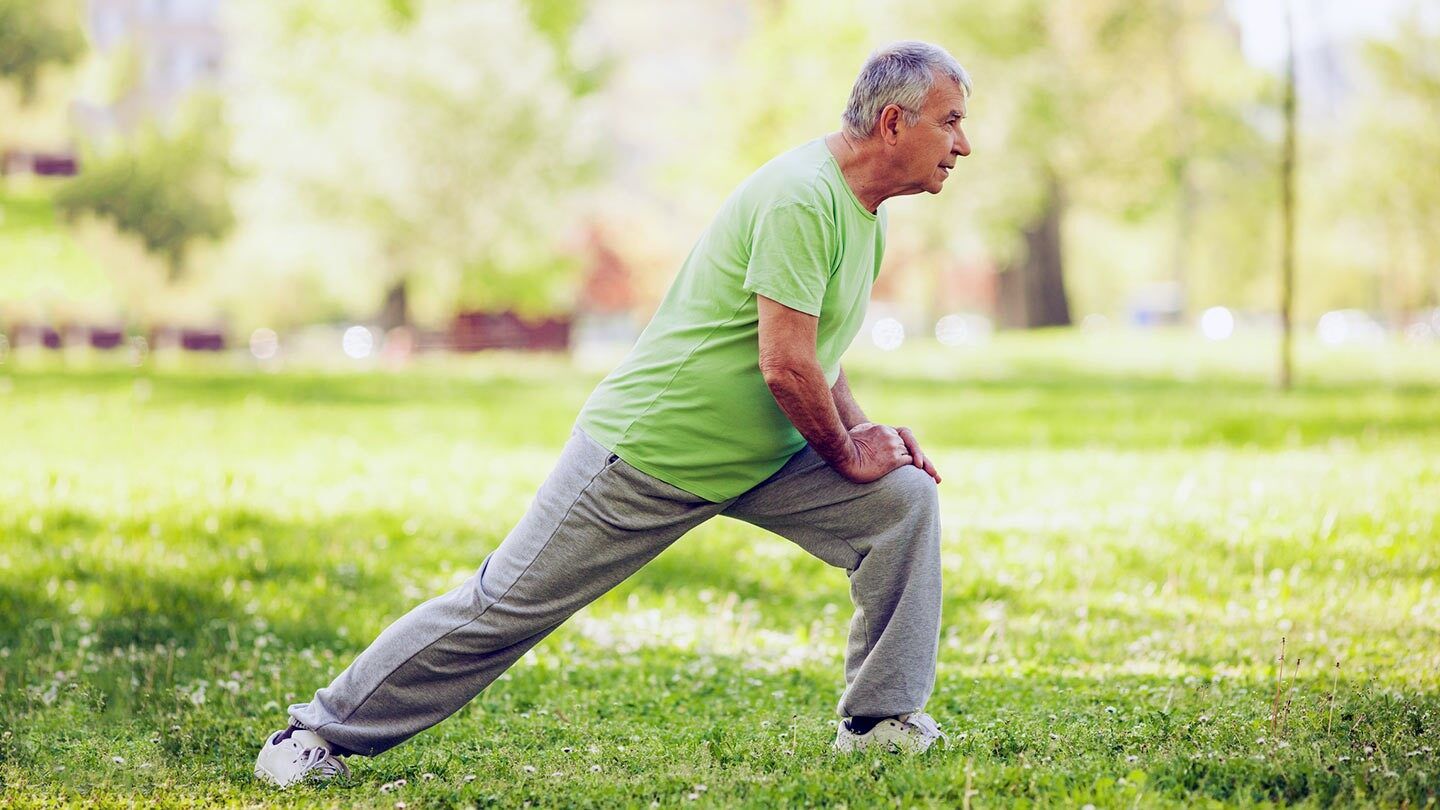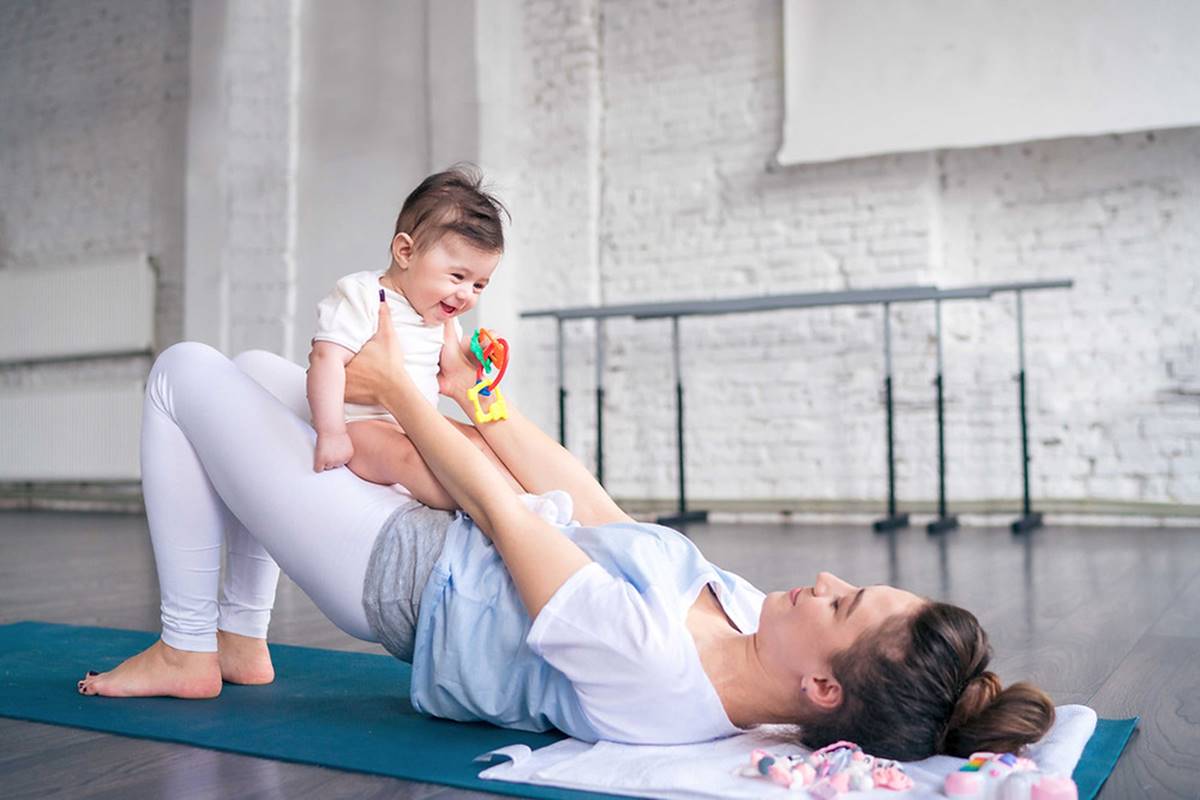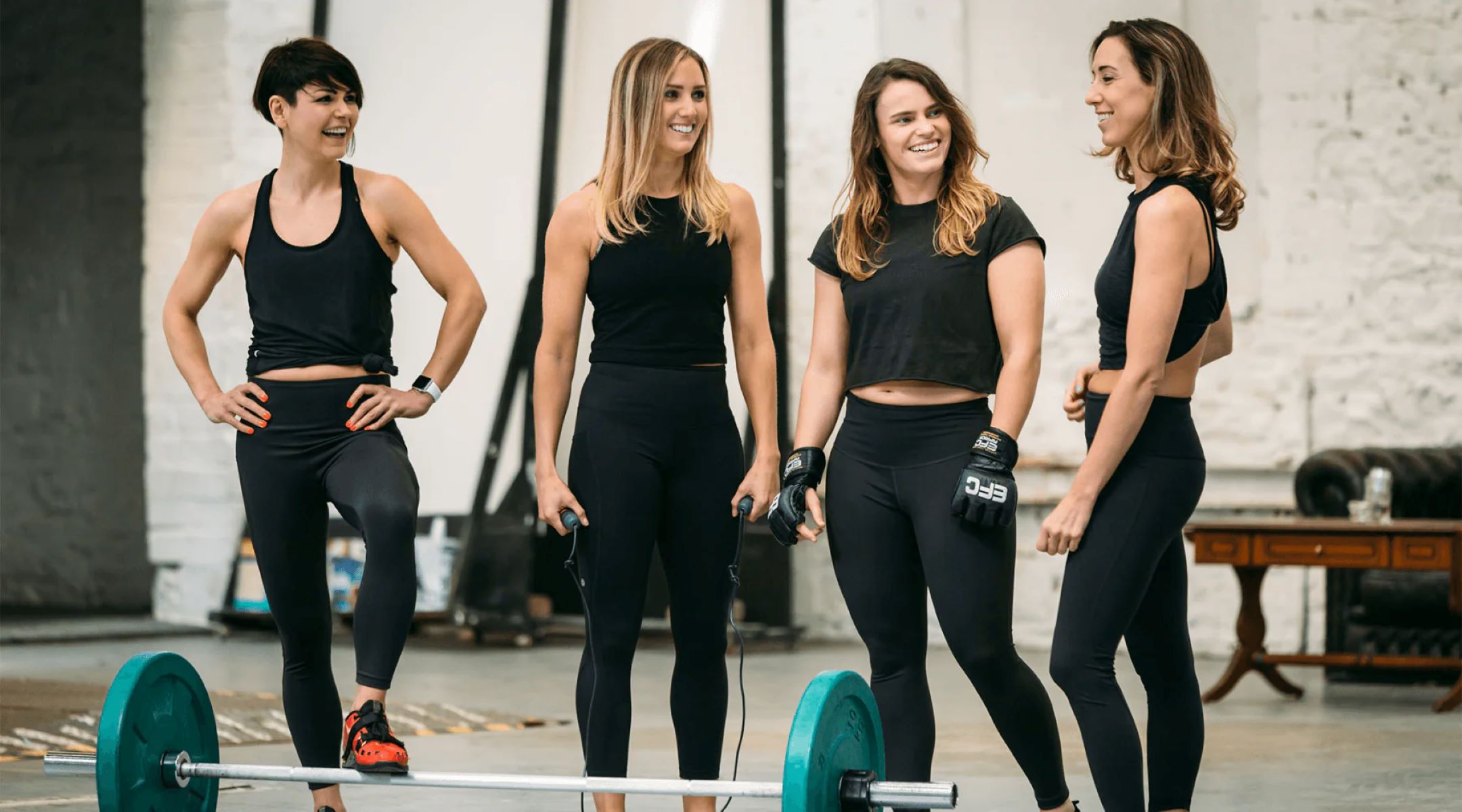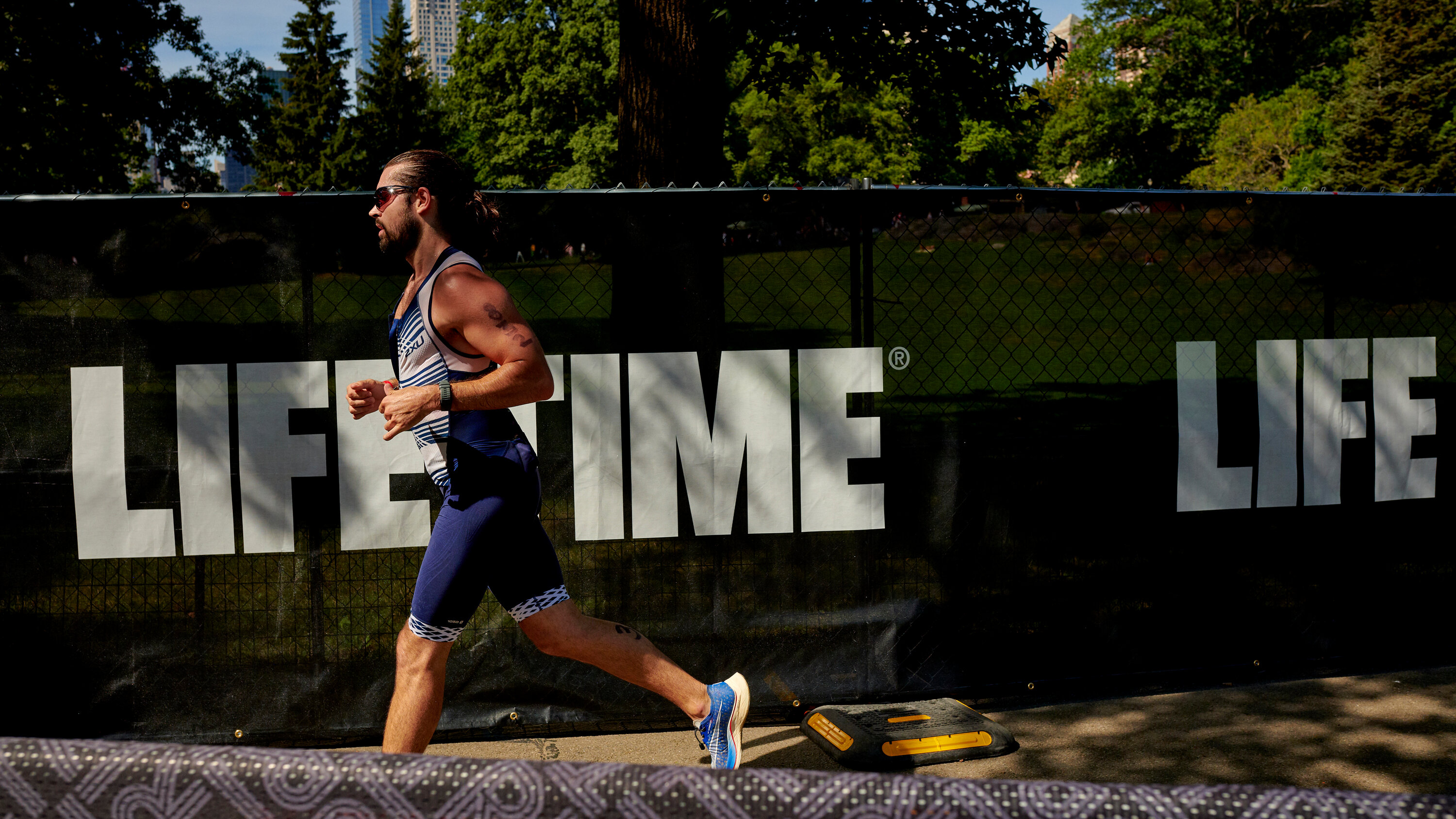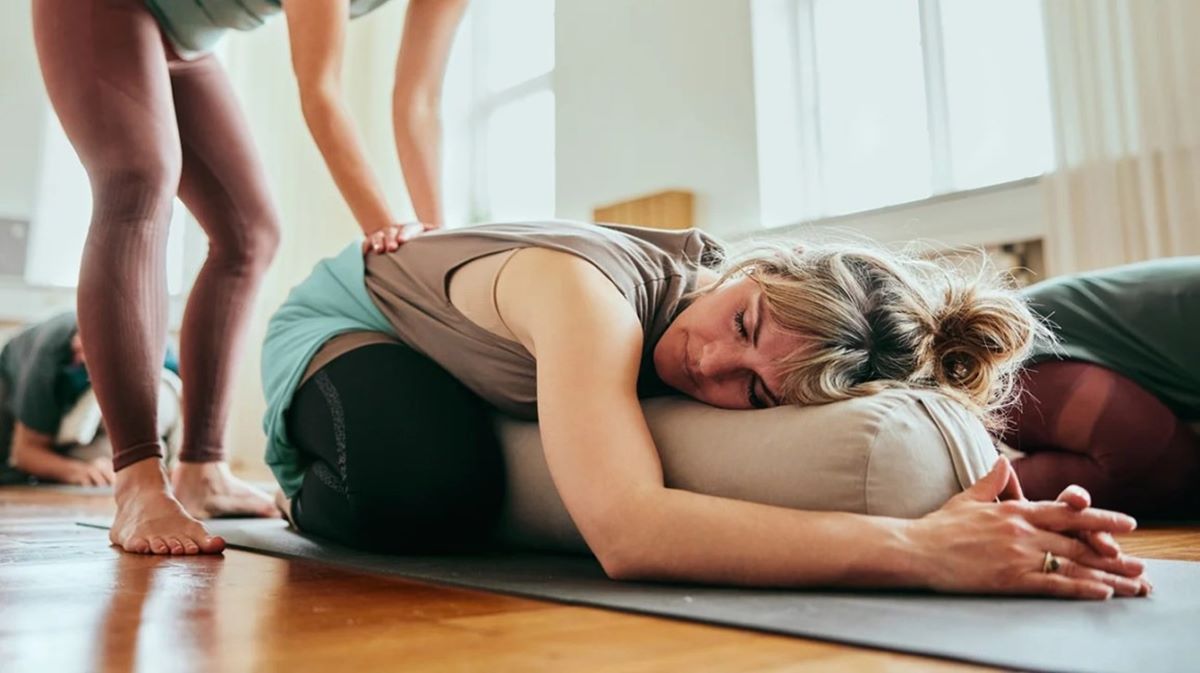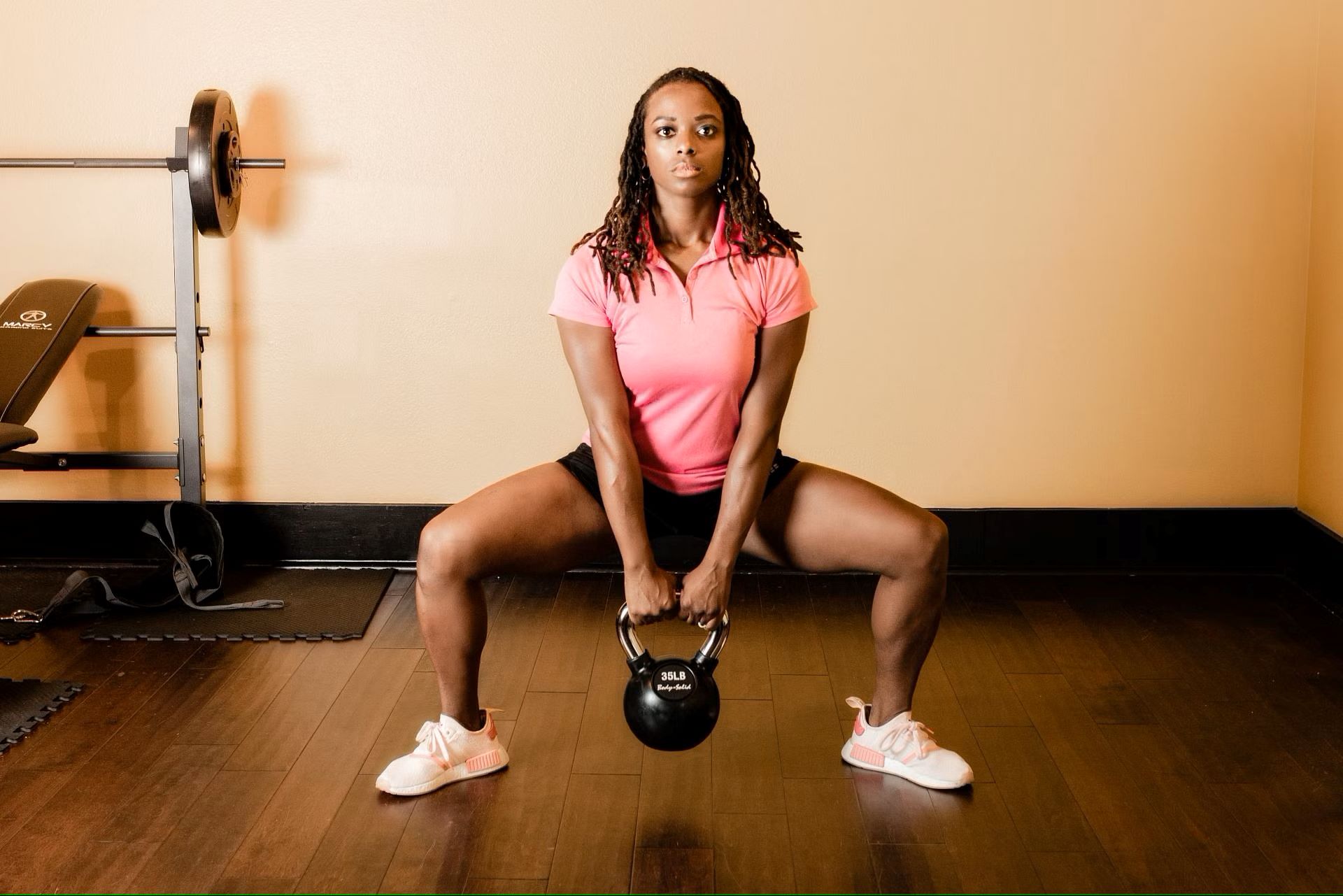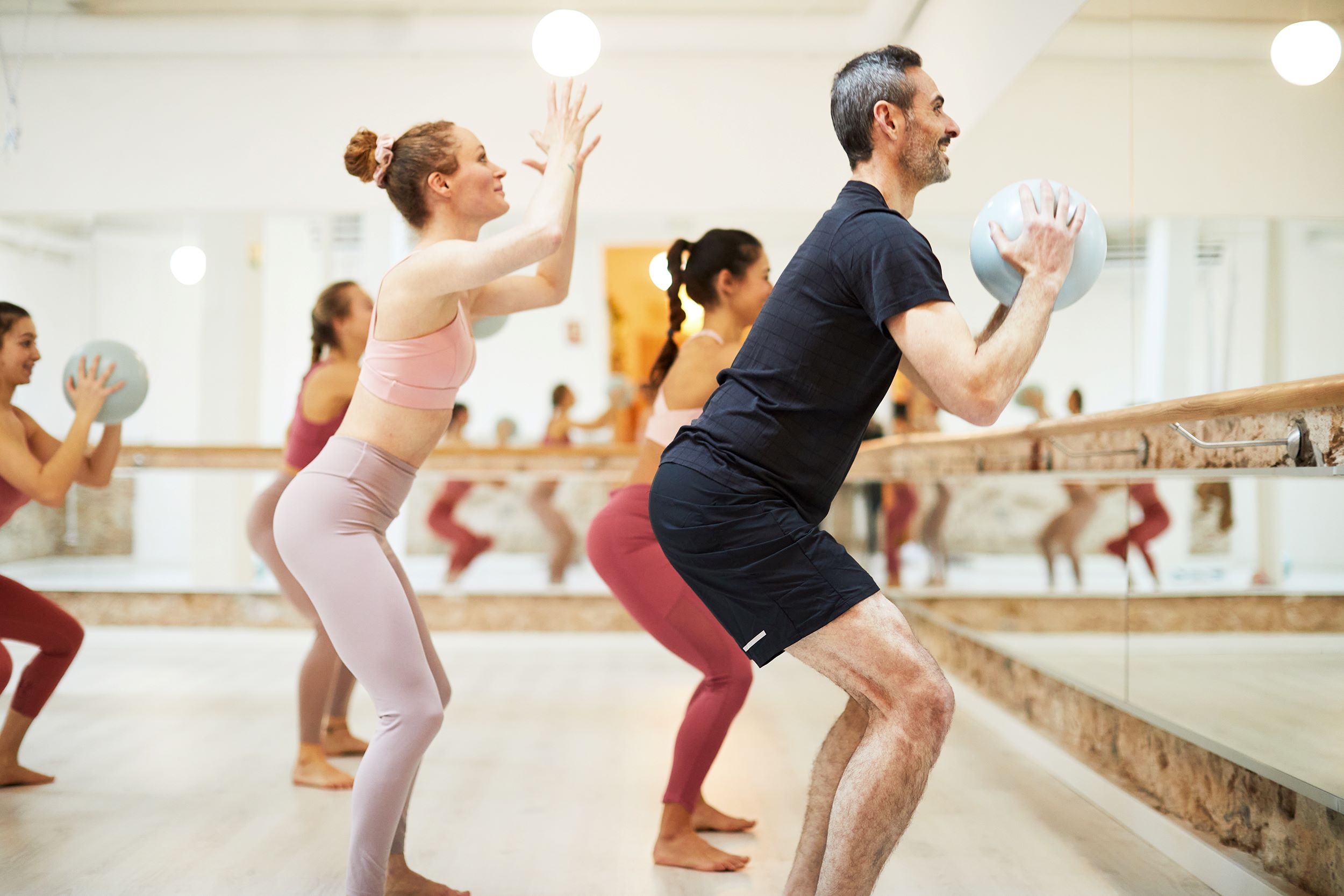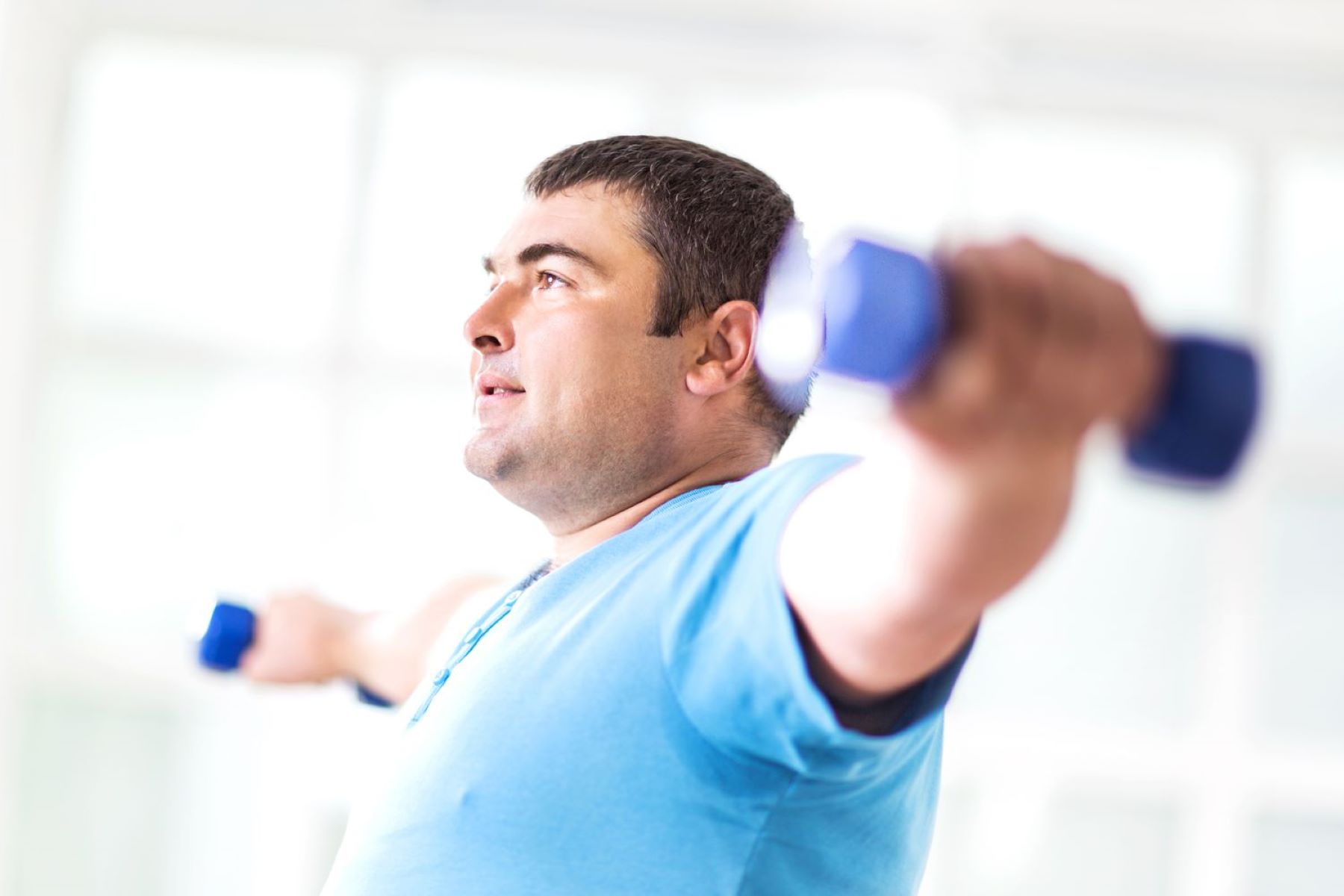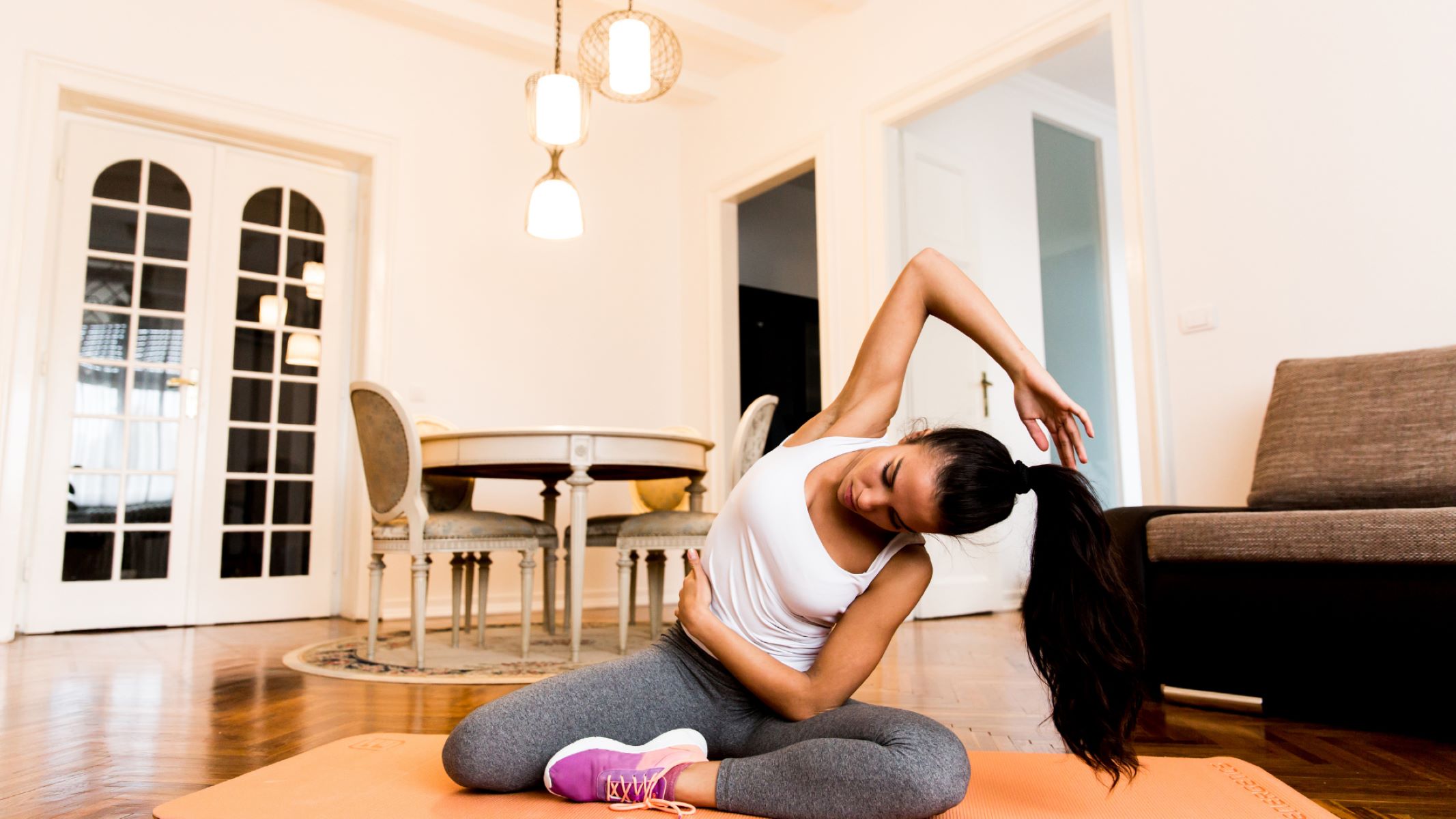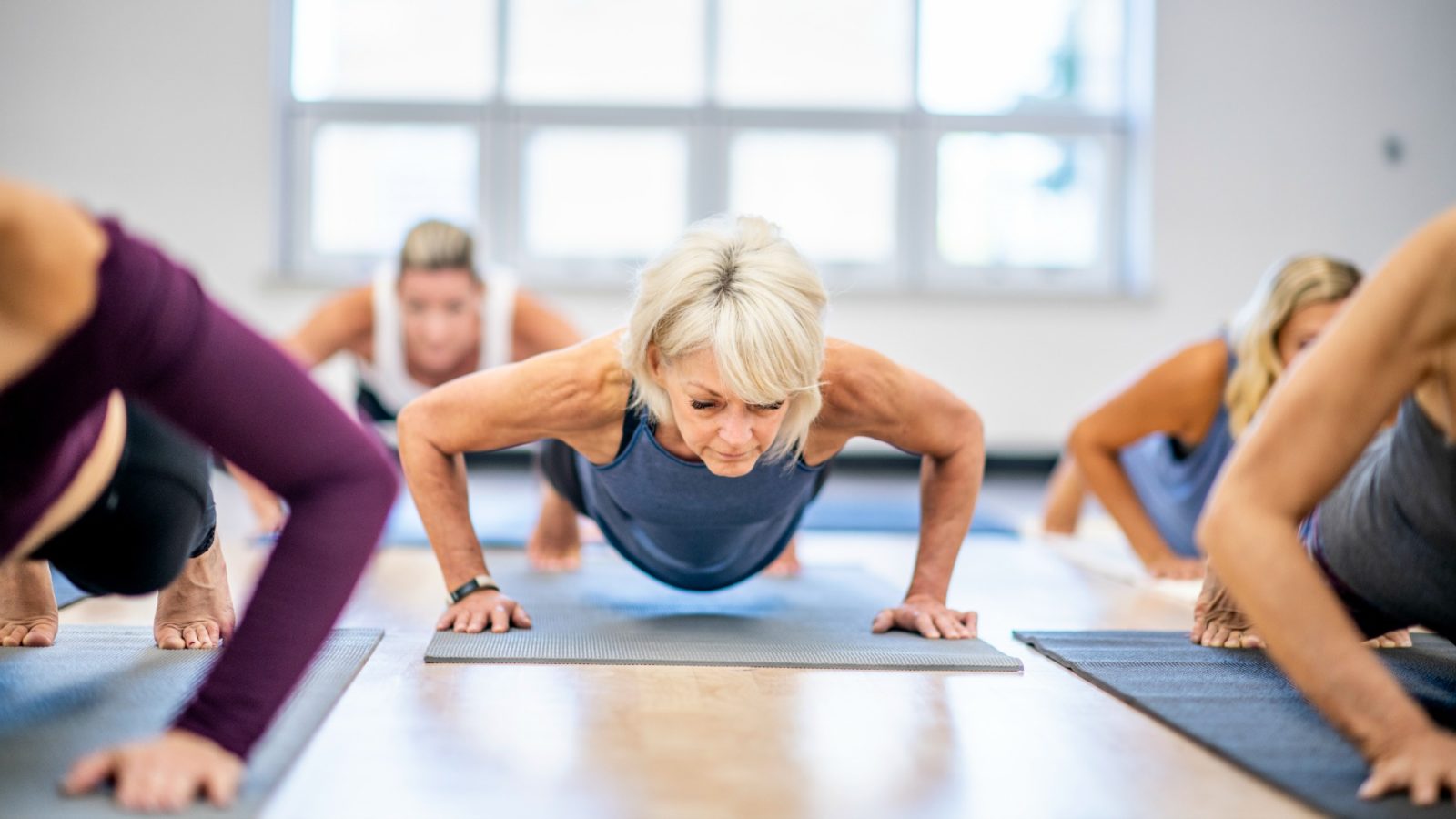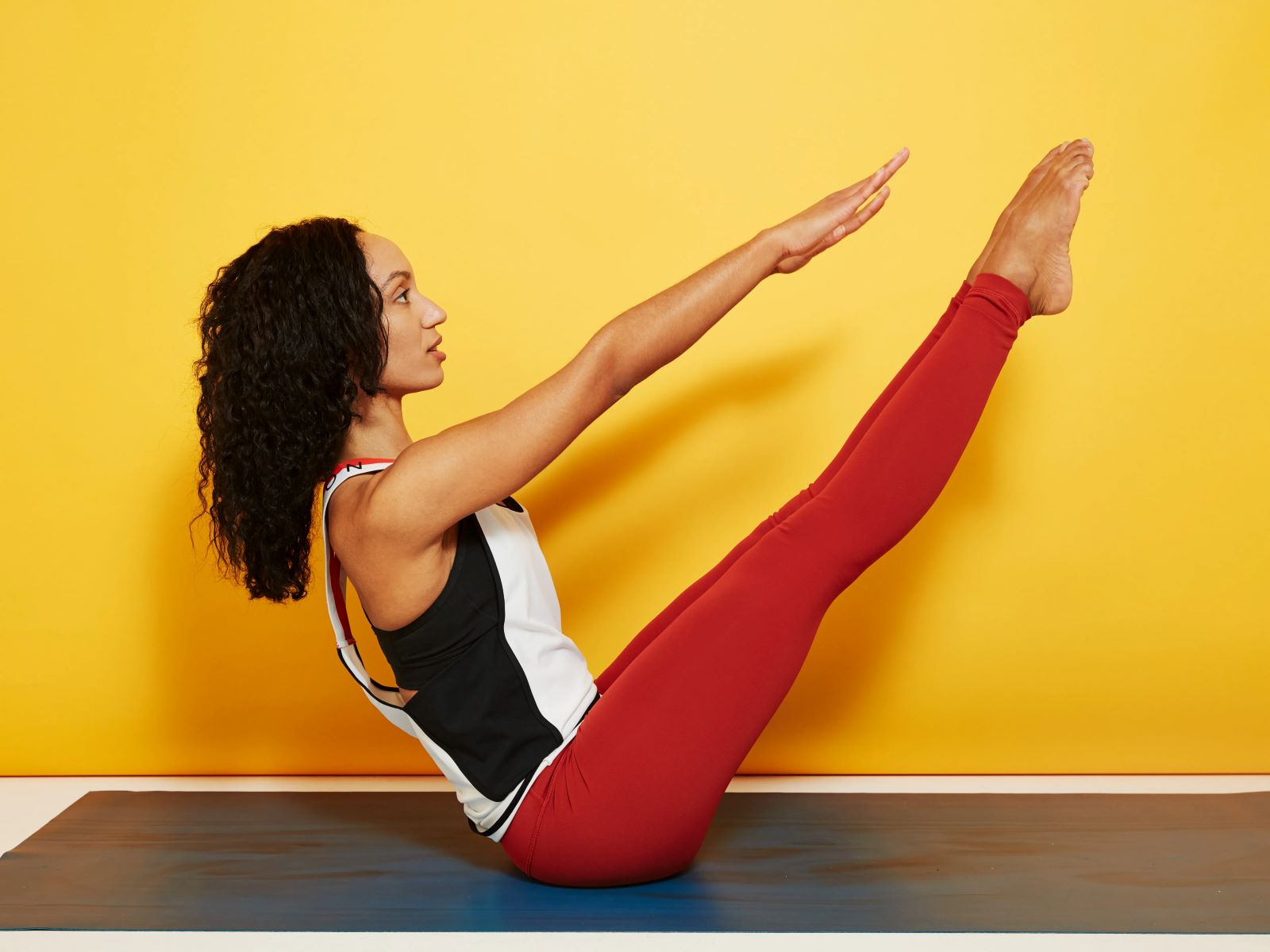

Featured
What Is A Pilates Workout
Modified: August 19, 2023
Discover the benefits of a Featured Pilates Workout and improve your overall strength, flexibility, and posture. Achieve a balanced mind-body connection with this effective and low-impact exercise routine.
Introduction
Welcome to the world of Pilates, a holistic exercise method that focuses on strengthening the body, improving flexibility, and enhancing overall well-being. Pilates has gained immense popularity in recent years, attracting people from all walks of life, from athletes to office workers and everyone in between. But what exactly is Pilates and why has it become such a popular fitness regimen?
Pilates is named after its creator, Joseph Pilates, who developed the exercise system in the early 20th century. Originally known as “Contrology,” Pilates was created to help individuals achieve mind-body harmony through controlled movements and precise muscle engagement.
The primary goal of Pilates is to create a balanced body by focusing on core strength, alignment, and breath control. Unlike other forms of exercise that primarily target superficial muscles, Pilates targets the deep stabilizing muscles, leading to improved posture, enhanced coordination, and increased body awareness.
One of the unique aspects of Pilates is its emphasis on the mind-body connection. As Joseph Pilates once said, “Physical fitness is the first requisite of happiness.” Pilates encourages individuals to be fully present in their movements, promoting mental clarity and a sense of overall well-being.
Whether you’re a beginner or an experienced fitness enthusiast, Pilates offers a wide range of exercises that can be customized to suit your individual needs and goals. From mat-based exercises to the use of specialized Pilates equipment, each session can be tailored to challenge you at your own level.
In this article, we will explore the history of Pilates, the principles behind the practice, the numerous benefits it offers, and how it can be adapted to suit different fitness goals and needs. So, get ready to dive into the world of Pilates and discover how it can transform your body and mind.
History of Pilates
The origins of Pilates date back to the early 20th century with its creator, Joseph Pilates. Born in Germany in 1883, Joseph Pilates was a sickly child who suffered from asthma, rickets, and rheumatic fever. Determined to overcome his physical limitations, he dedicated his life to exploring various forms of exercise and movement.
During World War I, Joseph Pilates was interned with other German nationals in an internment camp. It was during this time that he began developing his unique exercise system, using bed springs and other equipment to rehabilitate fellow prisoners who were injured or ill.
After the war, Pilates moved to New York City, where he opened his first studio in 1926. He initially worked with dancers and athletes, using his exercise method to help them improve their strength, flexibility, and overall performance. Pilates’ studio soon gained a reputation among the New York elite, attracting clients from all walks of life.
Joseph Pilates documented his exercise method in his book “Return to Life Through Contrology,” published in 1945. He emphasized the importance of the mind-body connection and the idea that physical fitness is essential for overall well-being.
Throughout the years, Pilates continued to refine and evolve his exercise system. He invented various pieces of equipment, such as the Reformer, the Cadillac, and the Wunda Chair, that are still used in modern-day Pilates studios today.
After Joseph Pilates’ death in 1967, his exercise method was passed down to his students, who continued to teach and spread the Pilates principles. Over the years, Pilates has gained widespread recognition and popularity as a highly effective and versatile exercise system.
Today, Pilates is practiced by millions of people around the world, ranging from fitness enthusiasts to professional athletes. It has been adapted into various forms, including mat-based Pilates and equipment-based Pilates, allowing individuals to choose the approach that best suits their needs and preferences.
The history of Pilates is a testament to the enduring impact of Joseph Pilates’ innovative exercise method. His commitment to improving physical health and promoting overall well-being has made Pilates a timeless practice that continues to transform the lives of countless individuals today.
Principles of Pilates
The practice of Pilates is built upon a set of principles that guide the execution of each movement and exercise. These principles, developed by Joseph Pilates himself, are essential for maximizing the effectiveness and benefits of the Pilates method. Let’s explore some of the key principles of Pilates:
- Control: Control is at the core of Pilates. Every movement should be performed with precision, focusing on fluid and controlled movements. By maintaining control, you engage the targeted muscles more effectively and reduce the risk of injury.
- Centering: Centering refers to the concept of activating and engaging the body’s center, commonly known as the “powerhouse” or the core. The powerhouse includes the abdominals, lower back, pelvis, and buttocks. By centering your movement and focusing on this powerhouse, you develop core strength and stability.
- Concentration: Pilates requires intense mental focus and concentration on every movement. By fully engaging your mind during the exercises, you enhance body awareness and improve the connection between the mind and body.
- Flow: Fluidity and grace are emphasized in Pilates. Movements should flow seamlessly from one to another, maintaining a continuous rhythm. This principle ensures that the exercises are performed with efficiency and synchronicity.
- Precision: Precision is vital in Pilates. Each movement should be performed with exactness, paying attention to alignment, muscle engagement, and breath control. Precision ensures that the targeted muscles are effectively worked and that the body is moving in the most efficient and beneficial way.
- Breathing: Proper breathing is a fundamental aspect of Pilates. Joseph Pilates referred to it as “the complete inhalation and complete exhalation.” Proper breathing helps to oxygenate the muscles, improve circulation, and promote relaxation. It also aids in maintaining the mind-body connection.
- Alignment: Correct alignment is emphasized in Pilates to achieve optimal posture and muscle balance. Proper alignment ensures that the body is in the correct position to engage the targeted muscles and reduce strain on the joints.
These principles form the foundation of every Pilates session, whether you’re performing mat-based exercises or using specialized Pilates equipment. They work in harmony to promote strength, flexibility, balance, and overall body awareness.
By adhering to the principles of Pilates, you can expect to see improvements in your posture, physical strength, coordination, and mental well-being. Each principle serves as a guide to help you get the most out of your Pilates practice and reap the benefits it offers.
Benefits of Pilates
Pilates offers a wide array of benefits for both the body and mind. Incorporating this exercise method into your fitness routine can have a transformative impact on your overall well-being. Here are some of the key benefits of Pilates:
- Improved Core Strength: Pilates is renowned for its ability to strengthen the core muscles, including the abdominals, lower back, and pelvic floor. The emphasis on core engagement in every movement helps to build a strong and stable core, leading to improved posture, balance, and stability.
- Enhanced Flexibility: Regular Pilates practice can significantly improve flexibility and range of motion. The stretching and lengthening movements in Pilates help to increase the flexibility of muscles and joints, reducing the risk of injuries and improving overall mobility.
- Increased Muscular Strength and Tone: Pilates works the entire body, targeting all major muscle groups. By using resistance and body weight, Pilates exercises help to build lean muscle, resulting in improved strength and tone throughout the body.
- Improved Posture and Alignment: The emphasis on proper alignment in Pilates leads to improved posture and body awareness. Through regular practice, Pilates helps to correct imbalances, align the spine, and strengthen the muscles responsible for maintaining good posture.
- Enhanced Mind-Body Connection: Pilates encourages a strong mind-body connection, requiring concentration and focus during each movement. This mindfulness aspect of Pilates promotes mental clarity, reduces stress, and enhances overall well-being.
- Injury Prevention and Rehabilitation: Pilates is widely recognized for its therapeutic benefits. It can help prevent injuries by strengthening the muscles that support the joints and improving overall body alignment. Additionally, Pilates is often used as a rehabilitation tool to aid in the recovery of injuries and manage chronic conditions.
- Improved Athletic Performance: Pilates is a favorite among athletes for its ability to improve performance in various sports. By enhancing core strength, flexibility, and body awareness, Pilates can help athletes optimize their performance and reduce the risk of injuries.
- Stress Relief and Mindfulness: Pilates requires mental focus and concentration, making it a form of mindfulness practice. Through controlled movements and breath work, Pilates helps to reduce stress, promote relaxation, and improve overall mental well-being.
These are just a few of the many benefits that Pilates offers. Whether you’re looking to improve your physical strength, enhance flexibility, or reduce stress, Pilates provides a holistic approach to fitness that benefits the body and mind.
By incorporating Pilates into your regular exercise routine, you can experience these benefits firsthand and enjoy a healthier, stronger, and more balanced body and mind.
Pilates Equipment
Pilates utilizes a variety of specialized equipment that enhances the benefits of the exercises and provides added resistance and support. While mat-based exercises are the foundation of Pilates, equipment-based Pilates takes the practice to the next level. Here are some of the key pieces of Pilates equipment:
- Reformer: The Pilates Reformer is perhaps the most well-known and versatile piece of equipment. It consists of a sliding carriage with adjustable springs, straps, and a pulley system. The Reformer offers a wide range of exercises that target the entire body, providing resistance and assistance as needed.
- Cadillac: The Cadillac, also known as the Trapeze Table, is a versatile piece of Pilates equipment that consists of a bed-like structure with a canopy frame, springs, straps, bars, and various attachments. The Cadillac offers a wide range of exercises that can be modified to accommodate various fitness levels and goals.
- Chair: The Pilates Chair is a compact and versatile piece of equipment that offers a multitude of exercises. It consists of a pedal platform with attached springs and handles. The Chair is excellent for targeting the lower body, particularly the legs and glutes, and can be used for both strength and cardiovascular exercises.
- Ladder Barrel: The Ladder Barrel is a curved barrel-shaped apparatus with a ladder-like structure on one side. It is used to perform various stretching and strengthening exercises that target the core, back, hips, and legs. The barrel shape supports the body’s natural curves and allows for deep stretching and strengthening.
- Pilates Ball: The Pilates Ball, also known as the Swiss Ball or Exercise Ball, is a versatile and inexpensive piece of equipment. It adds an element of instability to Pilates exercises, challenging the core muscles and improving balance. The Pilates Ball can be used for a wide range of exercises, from core work to upper and lower body strengthening.
- Pilates Ring: The Pilates Ring, also known as the Magic Circle, is a flexible ring with padded handles. It is used to add resistance and challenge to Pilates exercises and helps to target the arms, legs, and core. The Pilates Ring is lightweight and portable, making it a convenient tool for both studio and at-home workouts.
These are just a few examples of the Pilates equipment commonly used. Each piece offers unique benefits and allows for a wide range of exercises that can be modified to suit different fitness levels and goals.
However, it is important to note that while equipment-based Pilates is beneficial, it is not essential to experience the benefits of Pilates. Mat-based Pilates, which uses just a mat and sometimes small props like resistance bands or hand weights, can provide a highly effective workout on its own.
Whether you choose to incorporate equipment or stick to mat-based exercises, Pilates offers a versatile and adaptable approach to fitness that can be customized to meet your individual needs and preferences.
Basic Pilates Exercises
Pilates offers a wide range of exercises that can be performed on a mat or using specialized equipment. These exercises work the entire body, focusing on core strength, flexibility, and alignment. Here are some basic Pilates exercises that can be incorporated into your routine:
- Roll Up: Lie on your back with arms extended overhead and legs straight. Slowly roll up, reaching for your toes as you lift your upper body off the mat. Exhale as you roll back down to the starting position, engaging your core throughout the movement.
- Hundred: Lie on your back with knees bent, feet flat on the mat, and arms by your sides. Lift your head and shoulders off the mat, extend your arms straight by your sides, and lift your legs to a tabletop position. Pump your arms up and down while inhaling for five counts and exhaling for five counts, repeating the pattern ten times.
- Single Leg Circle: Lie on your back with one leg extended straight up to the ceiling and the other leg extended on the mat. Circle the extended leg in both directions, making large controlled circles while keeping the rest of your body stable. Repeat on the other leg.
- Bridge: Lie on your back with knees bent and feet hip-width apart. Lift your hips off the mat, engaging your glutes and pressing your weight through your heels. Hold for a few seconds before lowering back down with control.
- Plank: Start in a push-up position with your hands directly under your shoulders and your body in a straight line from head to toe. Engage your core and hold the position, avoiding sagging or arching your back. Modify by dropping to your forearms if needed.
- Swan: Lie facedown with hands beneath your shoulders and legs straight. Press through your hands and lift your chest off the mat, pulling your shoulder blades down and together. Hold for a few seconds before lowering back down.
- Pilates Teaser: Sit on the mat with your legs extended and arms reaching forward. Roll back onto your lower back, keeping your legs lifted and reaching toward your toes. Roll back up to a balanced position before rolling back down again.
These basic exercises are just a starting point and can be modified or progressed to suit your fitness level. Remember to focus on proper form, engage your core, and breathe deeply throughout each movement.
It is important to note that Pilates exercises should be performed under the guidance of a qualified instructor, especially if you are new to Pilates or have any specific health concerns or injuries. They can provide personalized modifications and ensure proper execution.
Incorporating these basic Pilates exercises into your routine can help strengthen your core, improve flexibility, and enhance your overall body awareness.
Advanced Pilates Exercises
As you progress in your Pilates practice and develop strength, flexibility, and body awareness, you may be ready to incorporate more advanced exercises into your routine. These exercises challenge your stability, strength, and control in new ways. Here are some advanced Pilates exercises to consider:
- Control Balance: Start seated on the mat with one leg extended and the other knee bent. Lift yourself into a balanced position, balancing on your sit bones, and extend the bent leg out in front of you. Hold the position while maintaining a strong core and repeat on the other side.
- Scissors: Lie on your back with both legs extended towards the ceiling. Lower one leg towards the mat while keeping the other leg lifted. Switch legs in a scissor-like motion, engaging your abdominal muscles and maintaining control throughout the movement.
- Snake/Twist: Start in a plank position with your hands directly under your shoulders. Rotate your body to the side, lifting one arm towards the ceiling and opening your chest. Return to the plank position and repeat on the other side.
- Saw: Sit upright on the mat with your legs extended and wide apart. Twist your torso to one side, reaching your opposite hand towards your opposite foot. Return to center and repeat on the other side, keeping your spine long and your core engaged.
- Rolling Like a Ball: Sit on the mat with your knees tucked into your chest, arms wrapped around your legs, and chin tucked. Rock back onto your upper back and shoulders, then roll back up to a balanced position, maintaining control and engaging your core.
- Swimming: Lie facedown on the mat with arms extended overhead and legs extended. Lift your opposite arm and leg off the mat, reaching forward and backward as if swimming. Alternate sides in a controlled and coordinated manner.
- High Bridge: Lie on your back with knees bent, feet flat on the mat, and arms by your sides. Lift your hips off the mat to a high bridge position, extending one leg straight up to the ceiling. Hold the position and then lower back down with control. Repeat on the other side.
These advanced Pilates exercises require a strong foundation in the basic Pilates principles and a solid understanding of proper form and alignment. It’s important to progress gradually and listen to your body, only attempting exercises that are appropriate for your fitness level and capabilities.
Remember to engage your core, maintain proper breathing, and focus on precision and control in each movement. It’s always recommended to seek guidance from a qualified Pilates instructor to ensure proper technique and progression.
As you incorporate advanced Pilates exercises into your routine, you’ll continue to challenge and strengthen your body, build endurance, and deepen your mind-body connection.
Pilates for Rehabilitation
Pilates is not only a fitness regimen but also a valuable tool for rehabilitation and injury prevention. Its low-impact nature, focus on core strength, and emphasis on proper alignment make it an ideal form of exercise for individuals recovering from injuries or dealing with chronic conditions. Here’s how Pilates can be beneficial for rehabilitation:
- Injury Recovery: Pilates exercises can be modified to accommodate different injuries and aid in the recovery process. Whether you’re rehabilitating from a back injury, knee surgery, or other orthopedic conditions, Pilates can help strengthen the affected area, improve mobility, and promote overall healing.
- Improved Posture and Alignment: Poor posture and misalignment can contribute to or exacerbate certain injuries and chronic conditions. Pilates focuses on correcting postural imbalances, strengthening weak muscles, and improving overall alignment. By developing better postural habits, individuals can reduce pain and prevent further injury.
- Core Strength and Stability: The core plays a crucial role in maintaining stability and supporting the spine. Pilates exercises target the deep stabilizing muscles of the core, helping to rehabilitate and strengthen this area. Strengthening the core provides a solid foundation for movement and helps alleviate strain on other body parts.
- Improved Flexibility and Range of Motion: Many injuries and chronic conditions can lead to stiffness and limited range of motion. Pilates incorporates stretching and lengthening exercises that promote flexibility and increase joint mobility. By working within a pain-free range, individuals can gradually regain their flexibility and restore their range of motion.
- Body Awareness and Mindfulness: Pilates encourages individuals to develop body awareness, which is essential for proper movement and alignment. Through focused attention and concentration, individuals can gain better control over their body, improve coordination, and prevent compensatory movement patterns that can lead to further injury.
- Balance and Proprioception: Maintaining balance and proprioception (awareness of the body’s position in space) is crucial for injury prevention and rehabilitation. Pilates exercises challenge balance and proprioception through controlled movements and use of unstable surfaces or equipment, helping individuals regain stability and prevent future injuries.
- Reduced Pain and Stress: Pilates can have a positive impact on pain management by reducing muscle tension, promoting relaxation, and improving overall well-being. The focus on breath control and mindful movement can aid in stress reduction, allowing individuals to better manage pain and improve their quality of life.
It’s important to work with a qualified Pilates instructor who has experience in rehabilitation to ensure that exercises are properly modified and aligned with your specific needs. They can provide guidance and support, gradually progressing your workouts as your body recovers and becomes stronger.
Whether you’re recovering from an injury or dealing with a chronic condition, Pilates can play a valuable role in your rehabilitation journey, helping you regain strength, mobility, and confidence in your body.
Pilates for Weight Loss
While Pilates is not typically known as a high-intensity calorie-burning exercise, it can still be an effective component of a weight loss journey when combined with a balanced diet and overall healthy lifestyle. Pilates offers numerous benefits that can support weight loss efforts while contributing to overall well-being. Here’s how Pilates can aid in weight loss:
- Increased Muscle Tone: Pilates works the entire body, targeting all major muscle groups. By engaging and toning muscles, Pilates helps to increase muscle mass. The more muscle you have, the higher your resting metabolic rate, which means your body burns more calories even at rest.
- Burns Calories: Although Pilates may not burn as many calories as high-intensity aerobic exercises, it still contributes to calorie expenditure. The precise and controlled movements of Pilates engage multiple muscle groups, leading to an increased heart rate and calorie burn during the session.
- Improved Posture: Pilates focuses on proper alignment and strengthening the core, which can improve posture. Good posture not only enhances physical appearance but also helps to engage the muscles effectively, promoting more efficient movement and calorie burn throughout the day.
- Enhanced Flexibility: Pilates incorporates stretching and lengthening exercises that improve flexibility. Having better flexibility allows for a broader range of motion during workouts, facilitating exercises and increasing calorie burn by engaging muscles more fully.
- Reduces Stress and Emotional Eating: Regular Pilates practice helps to reduce stress and promote relaxation. High stress levels can contribute to emotional eating and weight gain. By incorporating Pilates into your routine, you may find that you are better able to manage stress and emotions, potentially reducing the desire to engage in emotional eating.
- Mindfulness and Mind-Body Connection: Pilates emphasizes the mind-body connection and encourages mindfulness during exercises. By staying present in the moment and focusing on the sensations of your body, you may become more attuned to hunger and fullness cues, making it easier to make healthier food choices and avoid overeating.
- Boosts Energy Levels: Regular Pilates practice can significantly increase energy levels. When you feel more energized, you are more likely to engage in other forms of physical activity or lead an active lifestyle, which aids in weight loss. Additionally, higher energy levels can help prevent fatigue-related eating and keep you motivated throughout the day.
It’s important to note that weight loss is a multifaceted process that requires a balanced approach involving a healthy diet, regular physical activity, and lifestyle changes. Pilates can be a valuable component of this approach, enhancing strength, toning muscles, and contributing to overall well-being on your weight loss journey.
Remember to consult with a healthcare professional or a qualified Pilates instructor to ensure that your exercise routine aligns with your specific weight loss goals and any individual considerations or restrictions.
Pilates for Pregnancy
Pregnancy is a unique and transformative period in a woman’s life, and it is crucial to prioritize health and well-being during this time. Pilates can be a safe and effective exercise option for expecting mothers, offering numerous benefits that support overall comfort, strength, and preparation for childbirth. Here’s how Pilates can be beneficial during pregnancy:
- Core Strength and Stability: Maintaining a strong core is important during pregnancy to support the growing belly and the changing center of gravity. Pilates exercises focus on core engagement, enhancing strength in the abdominal, back, and pelvic floor muscles, which can alleviate discomfort and promote stability throughout pregnancy.
- Improved Posture and Body Alignment: Pregnancy can lead to postural changes, such as increased curvature of the spine and rounding of the shoulders. Pilates emphasizes proper alignment and can help counteract these changes by strengthening the muscles that support good posture. Maintaining better alignment can alleviate common pregnancy-related discomforts like back pain.
- Enhanced Flexibility and Range of Motion: Pregnancy hormones can cause ligaments to loosen, increasing joint mobility and the risk of injury. Pilates incorporates gentle stretching and exercises that promote flexibility, helping to improve range of motion without overstretching or overexertion.
- Promotes Pelvic Floor Health: Pilates exercises specifically target the pelvic floor muscles, which play a crucial role in supporting the pelvic organs and can be affected by pregnancy and childbirth. Strengthening the pelvic floor can help prevent or minimize issues like urinary incontinence and support a quicker recovery postpartum.
- Enhances Body Awareness and Mindfulness: Pregnancy is a time of heightened body awareness, and Pilates encourages mindful movement and deep breathing. By practicing Pilates, expectant mothers can cultivate a stronger mind-body connection, helping them to listen to their bodies, manage stress, and promote relaxation.
- Safe Low-Impact Exercise: Pilates is a low-impact exercise method that puts minimal stress on the joints, making it suitable for pregnant women. It provides a gentle yet effective means of staying active without placing excessive strain on the body, reducing the risk of injury during pregnancy.
- Preparation for Labor and Recovery: Pilates exercises can help strengthen the muscles used during labor and delivery, such as the pelvic floor and deep abdominals. Additionally, the focus on breathing and relaxation in Pilates can contribute to better coping techniques during childbirth. After delivery, Pilates can aid in postpartum recovery by gradually rebuilding core strength and overall fitness.
It is important to consult with a healthcare provider before starting or continuing a Pilates practice during pregnancy. A qualified prenatal Pilates instructor can guide you through modified exercises suitable for each trimester and ensure that your practice is safe and appropriate for your specific needs and comfort.
Pilates offers pregnant women a balanced and mindful approach to exercise, helping them maintain strength, flexibility, and overall well-being throughout their pregnancy journey.
Pilates Myths and Misconceptions
Pilates is a popular exercise method that has gained recognition for its numerous benefits. However, along with its rise in popularity, there are also several myths and misconceptions surrounding Pilates. Let’s debunk some of the common myths and set the record straight:
- Myth 1: Pilates is only for the young and flexible. Pilates is suitable for people of all ages and fitness levels. It can be adapted to accommodate various abilities and needs, making it accessible to everyone, regardless of age or level of flexibility.
- Myth 2: Pilates is only for women. While Pilates is often associated with women, it is not exclusive to any gender. Men can benefit from Pilates just as much as women, as it offers benefits such as improved core strength, flexibility, and overall fitness.
- Myth 3: Pilates is easy and not a challenging workout. While Pilates exercises can be modified for beginners, they can also be intensified for advanced practitioners. Pilates challenges the body through controlled movements, precise muscle engagement, and body weight resistance, providing a highly effective workout that targets the deep stabilizing muscles.
- Myth 4: Pilates is only for rehabilitation and not a complete workout. While Pilates is known for its rehabilitative benefits, it is a comprehensive exercise method that offers a full-body workout. Pilates incorporates strength training, flexibility, balance, and cardiovascular elements, making it a well-rounded form of exercise.
- Myth 5: Pilates requires expensive equipment and can only be done in a studio. While specialized Pilates equipment like the Reformer or Cadillac can enhance the practice, mat-based Pilates is equally effective and accessible. Many Pilates exercises can be done with minimal equipment or props, making it possible to practice at home or in any suitable space.
- Myth 6: Pilates doesn’t contribute to weight loss. While Pilates may not burn as many calories as high-intensity cardio exercises, it can support weight loss as part of a balanced fitness routine. Pilates helps build lean muscle mass, which contributes to an increase in metabolism and more efficient calorie burning.
- Myth 7: Pilates is only for those with a strong core. Pilates is designed to strengthen the core, so even individuals with a weak core can greatly benefit from the practice. Pilates exercises are progressive, meaning they can be modified to suit different levels of core strength and gradually build strength over time.
It’s important to separate fact from fiction when it comes to Pilates. By dispelling these myths and misconceptions, we can have a more accurate understanding of the benefits and versatility of Pilates as a holistic exercise method.
Remember, if you have any concerns or specific health conditions, consult with a qualified Pilates instructor or healthcare provider to ensure that Pilates is suitable for you and that your practice aligns with your individual needs and goals.
Conclusion
Pilates is a powerful and versatile exercise method that offers numerous benefits for the body and mind. Whether you’re looking to improve strength, flexibility, posture, or overall well-being, Pilates can be a valuable addition to your fitness routine. By focusing on core strength, proper alignment, and controlled movements, Pilates helps to create a balanced body and mind connection.
The history of Pilates, rooted in Joseph Pilates’ innovative approach, has transcended time and continues to impact individuals around the world. From its origins in rehabilitation to its widespread adoption as a fitness regimen, Pilates has proven its effectiveness in promoting physical health and enhancing overall quality of life.
Whether you choose to practice Pilates on a mat or incorporate specialized equipment, the principles of Pilates – control, centering, concentration, flow, precision, breathing, and alignment – serve as a guide to help you derive the greatest benefits from each session.
Pilates is suitable for people of all ages and fitness levels, and it can be adapted to meet individual needs and goals. Whether you’re a beginner or an experienced practitioner, Pilates provides opportunities for growth, progression, and continued challenge.
From the basic exercises that establish a strong foundation to the advanced movements that push your limits, Pilates offers a wide range of exercises that can be customized to suit your abilities and objectives. Additionally, Pilates can be beneficial during different life stages, including pregnancy and rehabilitation, further showcasing its adaptability and versatility.
As with any exercise program, it is essential to seek guidance from a qualified instructor, especially if you are new to Pilates or have specific health concerns. A knowledgeable instructor can ensure proper technique, provide modifications, and offer personalized guidance to help you get the most out of your Pilates practice.
So, whether you’re seeking to enhance your physical strength, improve flexibility, rehabilitate from an injury, manage weight, or simply experience the mind-body connection, Pilates can be a transformative journey towards improved well-being and a more balanced, harmonious life.
